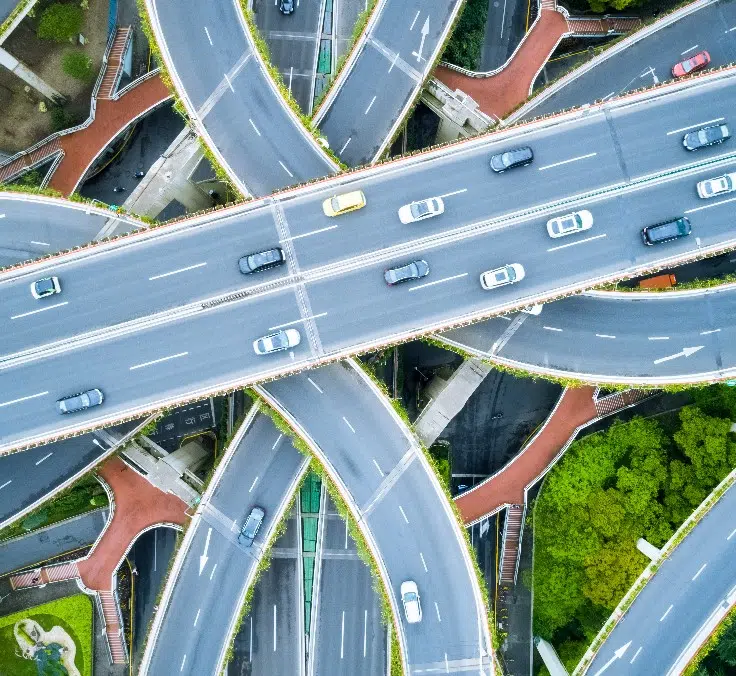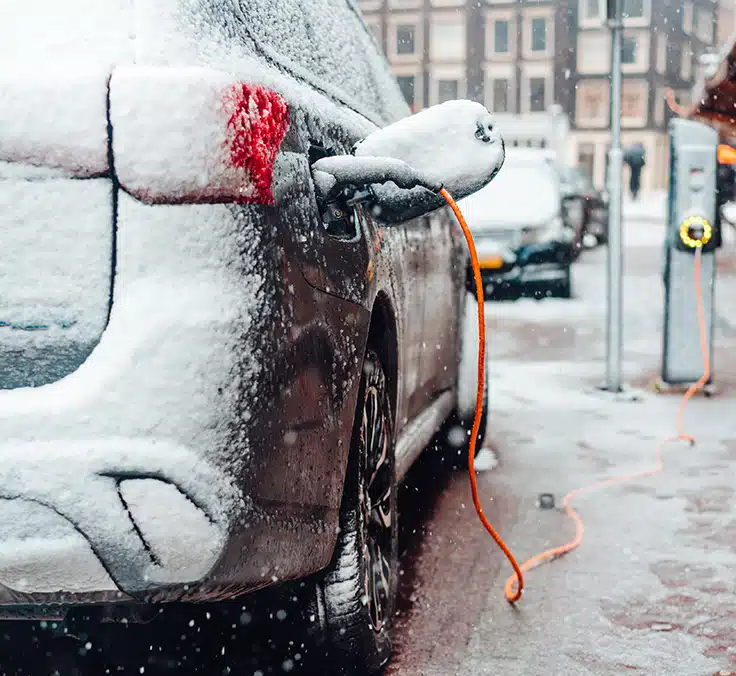INSURANCE | 06.24.2025
The 7 Biggest Mistakes in Traffic Jams – and How to Avoid Them
Traffic volumes on highways are high, and every driver spends hours in traffic jams every year. Many drivers behave incorrectly in these situations, which not only impedes traffic flow but can also cause dangerous situations. Here we explain the most common errors and offer tips for increased safety in slow-moving traffic.
Summer is the peak travel season of the year and causes the heaviest traffic congestion on highways and roads, both in Spain and beyond its borders. Proof of this is that in 2024, the Directorate General of Traffic (DGT) calculated more than 94 million long-distance journeys on Spanish roads in July and August, thus consolidating an upward trend in summer mobility. This phenomenon is not exclusive to our borders: according to the report Global Traffic Scorecard 2024 by INRIX, in many of the world’s major urban areas, there was an increase in congestion levels in 2024 compared to the previous year.
As for the time lost in traffic jams, the figures are also significant. Specifically, in Spain, drivers from cities such as Valencia, Barcelona, and Madrid lose between 40 and 60 hours to traffic jams per year. Numbers very similar to those of the USA, United Kingdom, and Germany. All of this means a considerable economic cost, both individually and collectively. In many cities around the world, lost time has continued to grow in 2024, affecting not only the well-being of citizens, but also productivity and the environment.
With all these hours lost in traffic, drivers should be familiar with the rules applied in these situations. However, it is common to observe reckless behavior during traffic jams, which can lead to dangerous or even illegal situations. The most common errors are highlighted below:
- Not Forming an Emergency Corridor
Regardless of how many lanes the highway has, an emergency corridor must always be formed between the far-left lane and the remaining lanes – as soon as traffic begins to slow. Many drivers react too late or not at all, which can cost life-saving minutes in an emergency. Especially in heavy traffic, proactive driving is essential to create space before it becomes too tight.
- Using the Shoulder or Emergency Corridor
The shoulder is not a fast lane for impatient drivers. Unauthorized use not only obstructs emergency vehicles but also endangers breakdown assistance or stranded vehicles. Driving in the emergency corridor is not only inconsiderate but also illegal, as it can endanger lives. Offenders face hefty fines and driving bans.
- Not Using Hazard Lights at the End of a Jam
When approaching the end of a traffic jam, drivers should activate their hazard lights early to warn vehicles behind them. This is especially important on winding or hilly roads where visibility is limited. Many drivers underestimate this simple yet effective safety measure.
Reckless and risky: exiting your car during a traffic jam not only hinders the work of emergency services, but also poses a threat to life.
- Getting Out of the Car on the Highway
Even when traffic is at a standstill, leaving the vehicle is strictly prohibited. Stretching your legs on the shoulder or between lanes is extremely dangerous – not only for those exiting but also for other road users. The only exception is a genuine emergency, such as a breakdown or accident. In such cases, the vehicle should be exited via the shoulder, and individuals should move behind the guardrail to safety.
- Tailgating
Many drivers underestimate the importance of maintaining distance even when stationary. Only with enough space between vehicles can an emergency corridor be used quickly and effectively. Appropriate separation also helps prevent minor collisions when traffic starts moving again.
- Leaving the Engine Running
Keeping the engine running during long stops wastes fuel and unnecessarily pollutes the environment. In many cities, this can even result in environmental fines. Modern vehicles are equipped with start-stop systems that automatically shut off the engine when the car is stationary – for example, at red lights or in traffic jams – and restart it when the driver is ready to move again.
- Using a Phone While Driving
Even in standstill traffic, using a phone is prohibited – unless the engine is off and the vehicle is safely parked. Many drivers are unaware of how distracting even a quick glance at the screen can be. Police also monitor phone use during traffic jams.
RELATED ARTICLES:




